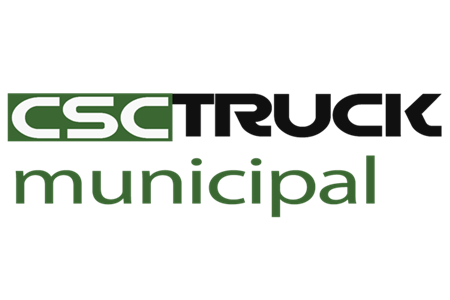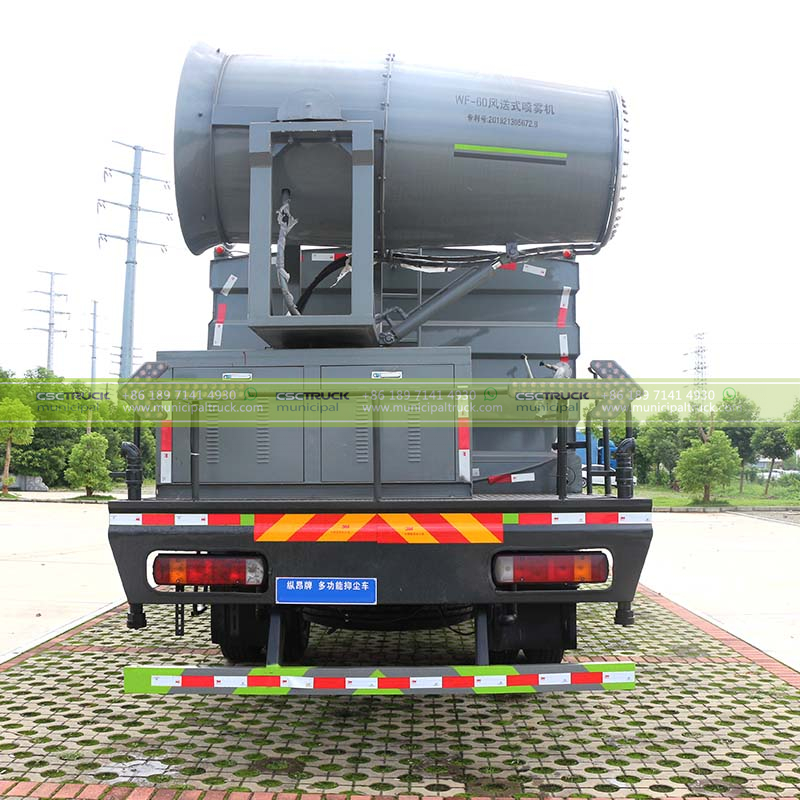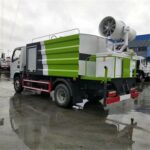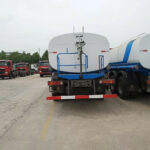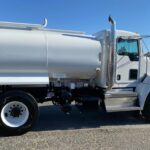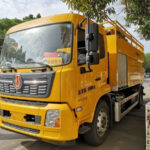As global cities face escalating thermal stress—with urban areas now averaging 5–9°C hotter than surrounding rural zones—the water mist sprayer truck has evolved from a dust control tool into a critical climate adaptation infrastructure. Deployed from Tokyo to Phoenix, these mobile systems leverage fluid dynamics and renewable energy to counteract the life-threatening impacts of urban heat islands (UHIs). This article examines the science, deployment strategies, and multi-sector benefits of mist cooling technology in 21st-century cities.
The Thermal Emergency in Concrete Jungles
UHIs now affect over 450 major cities globally, causing cascading ecological and economic damage:
- Energy Demand Surge: Each 1°C temperature rise increases cooling electricity consumption by 5–10%, pushing grids to collapse thresholds (e.g., Texas’ 2024 rolling blackouts)
- Public Health Crises: Heat-related deaths eclipsed 60,000 in Europe during 2022–2023 heat domes, with asphalt surfaces reaching 65°C
- Infrastructure Degradation: Road surfaces buckle at 50°C+, while rail tracks expand causing derailments
- Economic Losses: Philadelphia’s 2024 heatwave reduced retail footfall by 38% during peak hours
Traditional responses like increased air conditioning only exacerbate the problem by dumping waste heat outdoors. Water mist systems break this cycle through evaporative cooling—a process leveraging water’s 2260 kJ/kg latent heat of vaporization to absorb ambient energy.
Core Technology: Precision Micro-Droplet Engineering
Modern mist sprayers transcend simple water spraying through engineered aerosolization:
Ultrasonic Nozzle Arrays
Piezoelectric vibrators shatter water into <50-micron droplets—small enough to remain airborne for 90+ seconds but large enough to avoid inhalation risks. Seoul’s trucks achieve 11°C reductions using frequency-modulated nozzles adjusting to real-time humidity.
Renewable Energy Integration
Solar canopy roofs (4.2 kW peak output) and regenerative braking power:
- High-pressure pumps (80–120 bar)
- IoT sensor arrays monitoring PM2.5/O₃/NO₂
- Telematics for route optimization
Copenhagen’s hydrogen fuel-cell mist trucks operate 14 hours daily with zero emissions.
Dynamic Fluid Formulations
Phase-change materials (PCMs) like microencapsulated paraffin wax boost cooling duration by 300%. Tokyo’s advanced fleet mixes water with:
- Calcium chloride to suppress droplet evaporation in arid zones
- Chitosan biopolymers for particulate agglomeration
- Photocatalytic titanium dioxide for NOx reduction
Quantified Cooling Performance in Extreme Environments
Field validations prove mist systems outperform passive UHI mitigation:
| City | Intervention Zone | Temp Drop (°C) | Humidity Rise (%) | Effective Radius |
|---|---|---|---|---|
| Dubai | Souk markets | 14.2 | +22 | 85m downwind |
| Melbourne | Tram stops | 9.8 | +18 | 60m |
| Mexico City | Plaza de la Constitución | 12.1 | +15 | 110m |
Phoenix documented 43% fewer heatstroke ER visits along mist truck routes during 2024’s record 49°C summer.
Operational Synergy with Urban Services
Mist trucks maximize value when integrated into municipal workflows:
Fire Risk Mitigation Mode
During California’s wildfire seasons, trucks switch to high-volume deluge (2000L/min), pre-wetting evacuation routes. Santa Barbara’s fleet created 400m-wide damp corridors during 2024’s Lake Fire.
Air Quality Enhancement Cycles
Electrostatically charged mist captures:
- 92% of PM10 particles (verified in Delhi trials)
- 67% of ground-level ozone through hydroxyl radical generation
- Acid gases via alkaline additive injection
Public Space Activation
Singapore’s “Cool Corridors” program schedules misting at transit hubs during peak commute hours, increasing public space usage by 70% in afternoons.
Sustainable Water Management Imperatives
Criticism of “wasting water” is countered through closed-loop designs:
Rainwater Harvesting Integration
2500L roof-capture tanks collect stormwater for later misting use—Las Vegas trucks source 80% of water from monsoon drainage.
Greywater Compatibility
Advanced filtration enables use of treated wastewater. Tucson’s trucks purify sewage effluent to WHO non-potable standards via onboard reverse osmosis.
Precision Application AI
Computer vision identifies pedestrian density hotspots, restricting spraying to occupied zones. Barcelona reduced water consumption by 62% using NVIDIA Jetson-powered targeting.
The Multi-Service Urban Climate Toolkit
Mist sprayers deliver the greatest impact when synchronized with complementary fleets:
- Sprinkler trucks provide foundational soil moisture for urban forests, while mist systems target human thermal comfort
- Sweeper trucks suppress road dust before it becomes airborne, heat-absorbing particulate
- Hybrid mist/sweeper units in Paris clean streets while lowering ambient temperatures
This integrated approach transforms municipal vehicles into climate resilience platforms. During New York’s 2025 heat emergency, coordinated mist-sprayer-sweeper deployments maintained transit functionality when neighboring cities halted services. The silent circulation of these vehicles through concrete canyons represents a new paradigm—combating invisible atmospheric threats with equally invisible micro-droplet solutions. Their presence signals a city that refuses to surrender to thermodynamics, one finely calibrated spray at a time.
